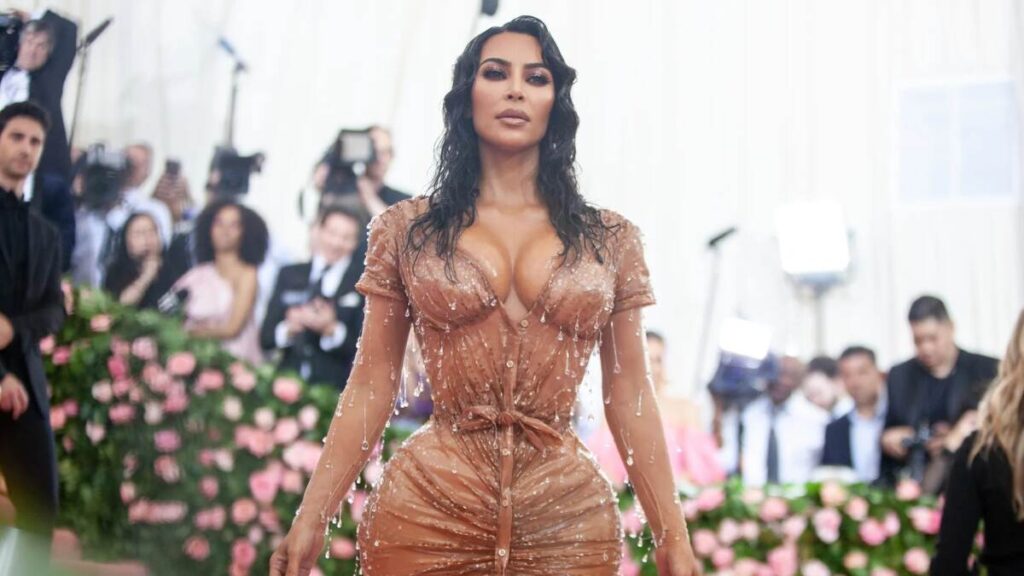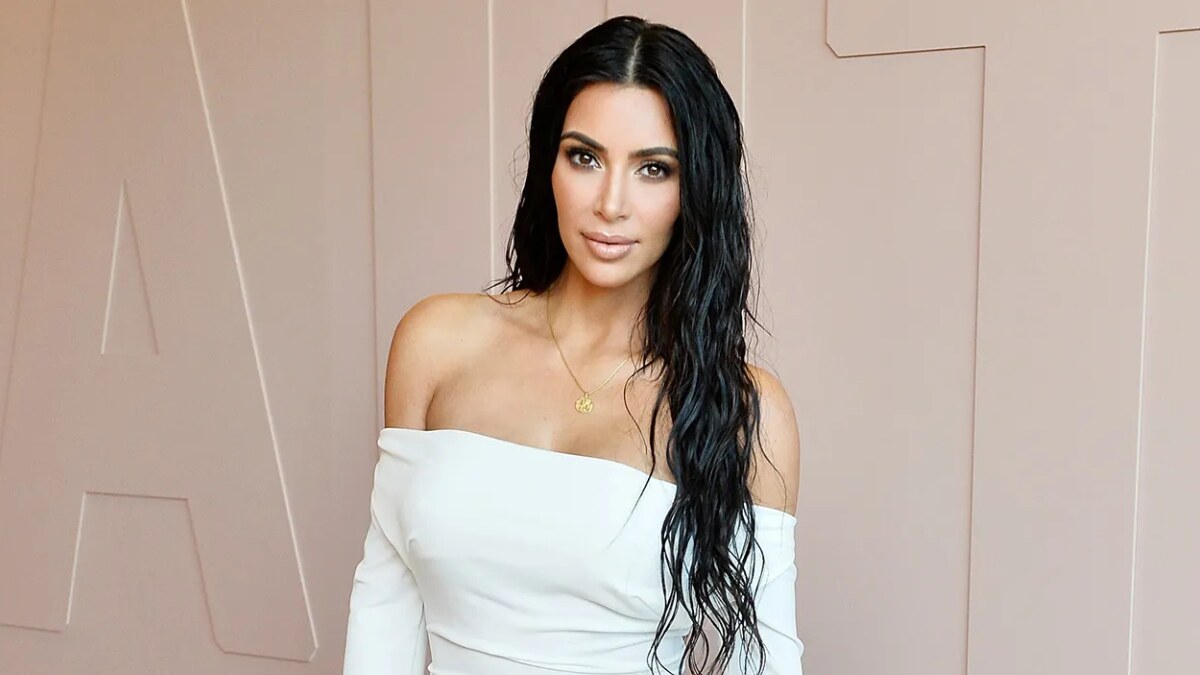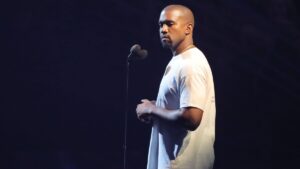It’s 2014, and the internet is melting. A single image — Kim Kardashian, poised against a shimmering backdrop, champagne arcing into a glass balanced on her famous curves — detonates across timelines, headlines, and group chats. “Break the Internet” isn’t just a cheeky slogan anymore; it’s a blueprint for a new kind of fame. In that moment, Kim isn’t merely a reality TV star — she’s a pop culture icon, the architect of a social media empire, and a case study in the billion-dollar influencer economy.
But this didn’t happen by accident. In a world where celebrity used to be filtered through magazine covers and late-night interviews, Kim hacked the system, bypassing the old gatekeepers and speaking directly to millions. She blurred the lines between personal life and public brand, creating a self-sustaining feedback loop of attention, aspiration, and influence.
For anyone still wondering why she dominates both the algorithm and the cultural conversation, the answer is simple: Kim Kardashian didn’t just play the fame game — she rewrote its rules, one post at a time.
The Pre-Instagram Era: From Reality TV to Reluctant Celebrity
The “Keeping Up” Catalyst
When Keeping Up with the Kardashians premiered in 2007, reality TV was riding a cultural high — a mix of voyeuristic curiosity and glossy escapism. Audiences were hooked on watching “real” people navigate drama, love, and ambition, even when the reality was scripted. The Kardashians entered this space with a distinctive twist: family dynamic marketing. The show wasn’t just about one personality; it was a rotating carousel of siblings, romantic entanglements, and lavish lifestyles, anchored by Kim’s rising star.
At the time, Kim was still primarily known through the lens of tabloid-era celebrity — paparazzi snaps, gossip columns, and red-carpet cameos. The series offered a new frame, one she didn’t fully control yet but which showcased her charisma, fashion sense, and knack for turning minor moments into memorable TV beats. This was reality TV branding at work, transforming curiosity into loyalty. By the time social media would later give her the steering wheel, Keeping Up had already made Kim a household name — the kind of fame that could survive, and thrive, in the digital era.
Media Perception Before Social Media Mastery
Before Instagram gave celebrities the power to narrate their own stories, Kim Kardashian’s public identity was largely shaped by others. In the late 2000s, celebrity gatekeeping was alive and well — paparazzi photos dictated her visibility, gossip magazines framed her as a socialite and party fixture, and early celebrity blogs amplified every outfit, romance, and controversy. This was pre-digital fame, when public image was filtered through editors, photographers, and headline writers with their agendas.
The media framing of Kim in this era was often reductive, leaning on glamour shots, scandalous headlines, or her connection to higher-profile friends. Without direct channels to address rumors or show her authentic voice, her brand existed in a fragmented form, pieced together by outsiders. It’s a sharp contrast to today’s self-curated feeds, where every caption, filter, and angle is chosen to reinforce a deliberate narrative — one Kim would eventually learn to master.
Architect of the Instagram Economy
Curating the “Kim” Brand in Real Time
Kim Kardashian’s early Instagram presence felt almost casual — snapshots of outfits, family moments, and candid nights out. But over time, it transformed into a masterclass in aesthetic curation, each post reinforcing a deliberate image. Her feed became a seamless blend of aspirational luxury — couture gowns, exotic getaways, glossy campaign shots — and “girl next door” relatability, like baking cookies with her kids or sharing makeup-free selfies.
This evolution reflected a sophisticated visual storytelling approach. Grid color schemes shifted seasonally, product launches were woven into personal moments, and behind-the-scenes shots gave followers the sense they were part of her inner circle. It was the personal branding playbook in action: every detail, from lighting to caption tone, served a larger narrative. By curating her life in real time, Kim blurred the line between authenticity and artistry, turning her Instagram into both a diary and a marketing engine.
Understanding the Algorithm Before It Was Cool
Long before “content strategy” became a buzzword, Kim Kardashian displayed an almost instinctive algorithm fluency. She seemed to know exactly when to post — early mornings for lifestyle shots, late evenings for red-carpet looks — maximizing visibility in followers’ feeds. Her social engagement tactics went beyond Instagram; a single image might debut on Twitter, get teased on Snapchat, and be repurposed for Facebook, creating a ripple of attention across platforms.
Kim mastered trend hijacking by tapping into viral moments and hashtag surges — whether it was a timely meme, a global event, or a pop culture reference. Think: dropping a perfectly styled Halloween look just as #Halloween flooded timelines, or posting a behind-the-scenes gown fitting minutes after an award show ended. Each post wasn’t random; it was a calculated play for reach, resonance, and relevance, years before most celebrities realized the algorithm could be an ally, not an obstacle.
The Business of Influence
Turning Followers into Customers
Kim Kardashian turned her massive following into a revenue engine by mastering the influencer-to-brand-owner pipeline. With ventures like KKW Beauty and Skims, she bypassed traditional retail, embracing a DTC business model that spoke directly to her audience. Product drops were strategically teased on Instagram, paired with polished campaign visuals and personal endorsements that felt both aspirational and attainable.
This was celebrity entrepreneurship with precision. She leveraged her audience’s trust — built over years of consistent engagement — to create instant demand. KKW Beauty’s initial contour kits famously sold out in minutes, generating millions in a single day. Skims followed suit, positioning itself as inclusive shapewear that matched Kim’s personal style ethos. Every launch was less about the item itself and more about the experience: exclusive, time-sensitive, and deeply tied to her image, ensuring followers felt they weren’t just buying a product, but buying into the brand of Kim.
Collaborations That Shifted Industry Norms
Kim Kardashian’s career is marked by strategic collaboration that reshaped how celebrity partnerships work. She’s seamlessly moved between high fashion and mass-market appeal — walking in Balenciaga couture one season, then dropping a capsule with fast-fashion giants the next. These moves weren’t contradictions; they were co-branding success stories designed to expand her cultural footprint.
Each partnership delivered a mutual brand lift: luxury houses tapped into Kim’s unparalleled social reach, gaining relevance with younger, digitally native audiences, while Kim absorbed the prestige and exclusivity of their heritage. Conversely, her mass-market collaborations reinforced her accessibility, keeping her grounded in everyday consumer culture. By blurring the traditional lines between “exclusive” and “mainstream,” Kim proved that influence isn’t about fitting into one market — it’s about strategically moving between them, bringing millions of followers (and potential customers) along for the ride.
Redefining the Celebrity-Fan Relationship
The Power of “Direct Access”
Kim Kardashian mastered the art of bypassing traditional PR channels, opting instead to speak directly to her audience through Instagram Stories, Twitter replies, and candid personal updates. This approach fostered a parasocial connection, where millions felt they had a personal relationship with her despite never meeting her. Her willingness to share behind-the-scenes family moments, beauty routines, or even unpolished thoughts created a sense of digital intimacy that traditional celebrity models couldn’t match.
This directness built deep audience loyalty — followers weren’t just consuming content; they felt included in her world. It redefined what it means to “know” a celebrity in the social media era, blurring the line between public persona and private life. By making herself both aspirational and accessible, Kim didn’t just grow her following; she cultivated a community that would trust, defend, and support her across every chapter of her brand’s evolution.
When Authenticity Becomes Strategy
Kim Kardashian has perfected the balance between openness and control, using curated vulnerability to deepen her audience’s investment. She shares tender family moments — birthday parties, candid videos of her children — alongside personal reflections on struggles, from postpartum challenges to high-profile divorces. These glimpses feel genuine, but they’re also a form of emotional branding, reinforcing her relatability while aligning with her overall image.
This strategic transparency is most evident in posts that appear spontaneous yet serve a brand purpose: a makeup-free selfie tied to a skincare launch, or a heartfelt interview about balancing motherhood and business timed with a new campaign. By letting followers believe they’re seeing the “real” Kim, she builds trust while still steering the narrative. It’s a delicate interplay of truth and design — authenticity packaged in a way that ensures every reveal strengthens her brand equity.
Influence by Association: The Kardashian Effect on Peers
A Comparative Lens: Kim vs. Paris Hilton, Kylie Jenner, Rihanna
Kim Kardashian occupies a unique position on the brand-building spectrum, bridging the gap between traditional celebrity exposure and digital-native dominance. Paris Hilton, her early mentor of sorts, embodied the early influencer prototype — cultivating fame through paparazzi visibility, reality TV, and luxury-coded appearances, but without the algorithmic precision Kim later mastered. Kylie Jenner, on the other hand, is a true social media native, building her empire with Snapchat-era intimacy and Instagram-driven product drops from day one.
Rihanna’s path diverges further, starting as a music-first star who transitioned into a powerhouse of celebrity entrepreneurship through Fenty Beauty and Savage X Fenty, leveraging artistry and cultural commentary alongside commerce. Kim’s influence archetype blends all three models: Paris’s media spectacle, Kylie’s platform fluency, and Rihanna’s cultural capital. The result is a hybrid strategy — adaptable, cross-platform, and relentlessly brand-conscious — that has allowed her to dominate industries far beyond her original claim to fame.
Industry Ripple Effects
Kim Kardashian’s rise triggered a wave of trend adoption across the entertainment world, forcing celebrities to rethink how they connect with audiences. Before her, many stars relied heavily on publicists, controlled press tours, and magazine exclusives. After Kim’s dominance, there was a noticeable digital pivot — actors, musicians, and athletes began treating Instagram and Twitter as primary storytelling platforms rather than side channels.
The influence of economic evolution was visible in moves like Jennifer Lopez integrating behind-the-scenes rehearsal clips into her feed, or Dwayne “The Rock” Johnson personally promoting film releases with direct-to-fan messages. Even legacy fashion houses followed suit, shifting from glossy print campaigns to influencer-driven launches. Kim’s blueprint proved that controlling your narrative wasn’t just possible — it was profitable. In the wake of her success, the celebrity playbook permanently expanded to include algorithm awareness, personal branding, and constant audience engagement as non-negotiable tools for cultural relevance.
Controversy, Criticism, and Control
Navigating Public Backlash
Kim Kardashian’s career hasn’t been without turbulence, from accusations of cultural appropriation to high-profile Photoshop scandals. Each incident carried the potential for an image crisis, with critics questioning her judgment and the media amplifying missteps. In the age of instant outrage, the stakes for brand damage are high — a single miscalculated post can overshadow years of goodwill.
Yet Kim has shown remarkable brand resilience, often addressing criticism directly or subtly pivoting the narrative. Whether issuing statements, adjusting future campaigns, or leaning into philanthropic efforts, she demonstrates an awareness of public accountability while protecting her core brand identity. These moments underscore the delicate balance between influence and scrutiny that defines modern celebrity.
The PR Flip: Turning Scandal into Spotlight
Kim Kardashian has a talent for narrative reframing, turning controversies that could derail others into opportunities for reinvention. Rather than letting negative press dictate the story, she practices media cycle mastery — addressing the issue just enough to keep control, then shifting attention toward a new project, partnership, or cause.
This form of public perception management has seen scandals morph into moments of heightened visibility, often boosting her relevance. For instance, after criticism of a provocative campaign, she might launch a philanthropic initiative or release a behind-the-scenes video revealing the creative intent. By integrating the controversy into her larger brand story, Kim not only defuses potential harm but often emerges with a stronger, more layered public persona.
Beyond Beauty and Fashion: Cultural and Political Footprint
Criminal Justice Reform Efforts
Kim Kardashian’s foray into celebrity activism has been most visible in her work on justice reform, where she’s used her platform to spotlight cases of wrongful or excessive incarceration. Notably, she advocated for Alice Marie Johnson, a nonviolent offender serving a life sentence, whose release was granted after Kim met with the White House.

Her policy influence extends beyond high-profile cases — she’s funded legal teams, supported bipartisan legislation, and enrolled in legal studies to better understand the system she’s trying to change. Public reception has been mixed, with praise for leveraging her influence for good and skepticism about celebrity involvement in policy. Still, her efforts have contributed to tangible outcomes, proving that fame, when focused, can move conversations — and sometimes laws — forward.
The Expanding Role of the Celebrity Activist
Kim Kardashian’s advocacy work reflects a broader cultural shift toward influence-driven advocacy, where public figures leverage fame for social impact. In this landscape, social responsibility has become an expectation, not an optional add-on to a celebrity’s brand. Kim’s legal reform initiatives position her within a growing class of public figures who use their platforms to address systemic issues rather than solely promote projects.
Her visibility brings both opportunity and scrutiny — the ability to mobilize attention quickly, but also the challenge of sustaining public trust in a world wary of performative gestures. By pairing her activism with tangible legal work and measurable outcomes, Kim exemplifies a model where celebrity involvement can contribute to lasting change, while also redefining what modern stardom entails.
My Firsthand Encounter with the Kardashian Machine
I didn’t expect to feel the hum. Not from the crowd, not from the speakers, but from the sheer concentration of attention in the room. It was a Skims pop-up in Los Angeles — minimalist racks, soft lighting, champagne flutes in hand — and every person there seemed tuned to one frequency: Kim. She hadn’t even arrived yet, but her presence was already orchestrated in the product displays, the playlist, the curated scent that floated through the air.
When she finally stepped in, it wasn’t chaos; it was choreography. Phones rose in unison. Staff subtly shifted to make sure every angle was perfect. I caught a glimpse of her interacting with a customer — leaning in, smiling, a hand on the arm — and it struck me: this wasn’t accidental warmth. It was strategic intimacy, the same quality that fuels her online empire.
In that moment, I realized Kim’s influence isn’t just digital; it’s environmental. The “Kardashian machine” is a seamless loop — social media drives the event, the event feeds the media, and every detail is engineered to reinforce her brand. It’s not just fame. It’s infrastructure. And standing there, I could see how easily it pulls people in.
Lessons from the Kim Kardashian Playbook
If there’s one thing Kim Kardashian’s career proves, it’s that influence is a skill, not an accident. Her rise offers a blueprint for personal brand scalability — start with a core identity, then expand into new arenas without losing the thread of who you are. She didn’t just launch products; she built ecosystems, making sure each venture (from beauty to shapewear) felt like a natural extension of her persona.
Her mastery of platform leverage is another key takeaway. Kim treats each channel — Instagram, TV, interviews — not as duplicates, but as complementary stages, each serving a unique role in her narrative. Timing is equally critical: she leans into cultural timing, dropping campaigns during trend peaks or attaching her voice to conversations already dominating the public mind.
The lesson? Don’t just chase attention — architect it. Curate what you reveal, adapt to the medium, and know when to seize the moment. Kim’s playbook isn’t about being everywhere; it’s about being exactly where the spotlight is, and making sure it stays there long enough to build something bigger than a headline.
The Legacy in Motion
Kim Kardashian’s story is still being written, but her trajectory hints at rare cultural longevity. In an era hurtling toward AI influencers, Web3 branding, and immersive virtual worlds, her true advantage isn’t just scale — it’s adaptability. She has shown a gift for brand reinvention, reshaping her image to match each phase of the digital era evolution without losing the core that makes her recognizable.
Whether she’s designing for a metaverse boutique, collaborating with algorithmic celebrities, or turning personal milestones into virtual experiences, Kim’s influence will likely extend beyond platforms we can name today. Her legacy isn’t bound to Instagram grids or reality TV reruns — it’s the ability to read the cultural moment, step into it fully, and make it hers before anyone else realizes it’s changed.
Nishant Wagh is the founder of The Graval and a seasoned SEO and content strategist with over 15 years of experience. He writes with a focus on digital influence, authority, and long-term search visibility.





6 thoughts on “Kim Kardashian and the Art of Influence: How She Redefined Celebrity in the Social Media Era”